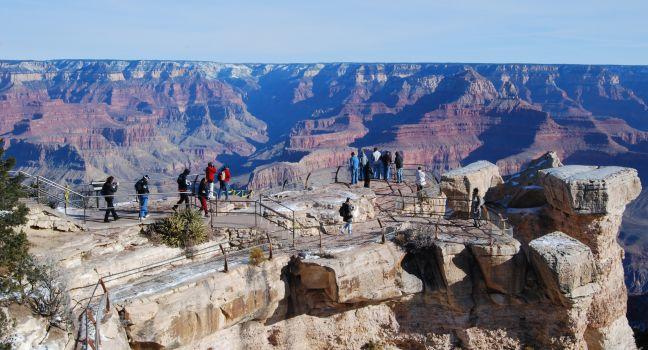Bright Angel Point
Bright Angel Point is one of the most awe-inspiring overlooks on either rim. To get to it, follow the trail that starts on the grounds of the Grand Canyon Lodge and runs along the crest of a point of rocks that juts into the canyon for several hundred yards. The walk is only ½ mile round-trip, but it's an exciting trek accented by sheer drops on each side of the trail. In a few spots where the route is extremely narrow, metal railings ensure visitors' safety. The temptation to clamber out on precarious perches to have your picture taken should be resisted at all costs.




